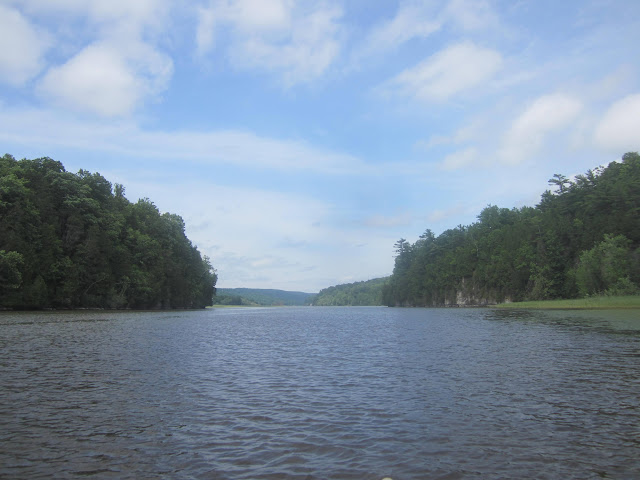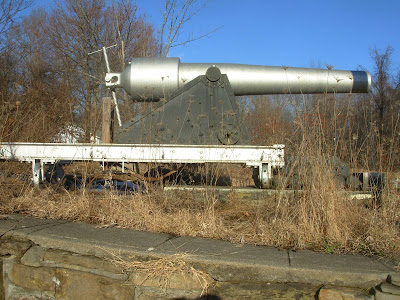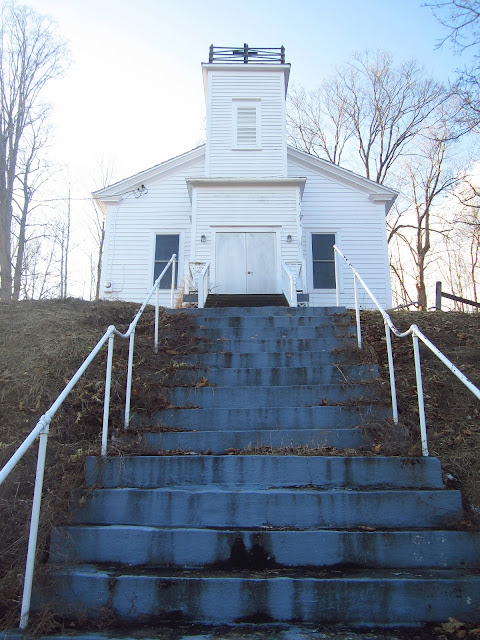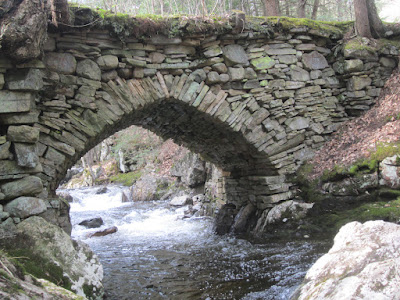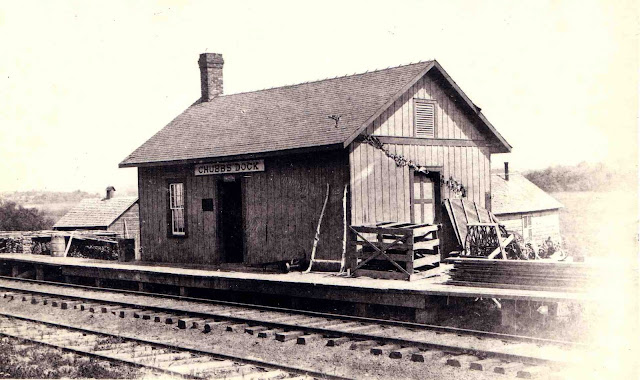There's something about the top of Adirondack cliffs. About how, like Sirens, they tempt you to come closer, to peer over the brink. I felt that temptation recently. There was a steep slope that dropped to emptiness. I could see water far below. There were trees to grab on to but the ground was slick from recent rains and the trees leaned out, as if they too wanted to see what was down there. Some had uprooted and toppled. Gravity felt like a lurking presence, ready to draw me into her embrace. I was alone and nobody really knew where I was (I know: bad and badder). From such moments are mini-adventures made. Moments at the edge.
'Edgy' might seem an odd description for an easy flat water paddle to a low hill. It's a trip anyone can do in a couple of hours. But The Narrows of Dresden is an odd place and 'edgy' might just be the best way to describe it. Especially since the low hill is split down the middle with cliffs facing each other and a bit of Lake Champlain filling the gap between them.
One obvious edge is The Narrows location. Indeed, for much of this outing you can't tell if you're in New York or Vermont. It's as far east as you can get in the Adirondacks, with one surprising qualifier that we'll get to shortly. Access is off of Rt. 22 in the Washington County hamlet of Clemons. Look for the large artillery (seriously) and turn off on to Lake Road. That will lead you down to your put- in at a place called Chubbs Dock.
There's a lot of interest here, even before the paddling begins. Take the landmark cannon for instance. Sometime before 1900 it was found on the bottom of Lake Champlain near Fort Ticonderoga and brought here "In memory of the Soldiers and Sailors of 61 to 65". Just a few feet down the road the Dresden Town Hall has a roll of honor for all the veterans this small Adirondack town has sent in defense of our freedom. From the same spot you look out on the communities well kept cemetery with the Dresden Baptist Church on a high knoll across the road. A little further down Center Clemons Road I've heard of an 1860 stone arch Keystone Bridge over Carrington Brook. Not sure if it is still there but you can see a similar structure, exquisitely preserved and apparently by the same craftsman, on nearby Pike Brook Road. In short order the Center Road loops back up to Rt. 22 beside a ledge that used to host another bit of Clemons lore: the iconic Red Top Tavern sign.
Back by the Town Hall, Lake Road drops steeply downhill to an intersection where you'll want to go right. A left will take you to the afore mentioned Red Top Tavern, a beloved local watering hole where a few fish stories have been told down thru the years. Unfortunately the establishment closed about a year ago, another victim of regulations and rising costs. You'll also want to keep an eye out for mysterious wooden creations hiding in the woods along the road. Not sure what they are but they certainly add to the areas edgy vibe.
Dropping down to Lake Champlain the road makes an awkward crossing of railroad tracks at a place called Chubbs Dock. Look both ways as this is an active route with both freights and Amtrack. At one time this was a busy station with passengers getting off here for the carriage ride over the mountain to Lake George. Today it's part of a 156 acre parcel of Forest Preserve that DEC acquired from the Nature Conservancy in 2012. At the end of the road is a launch with parking for a couple of cars.
Directly across from the put-in is Maple Bend Island. It divides the lake into two channels. While the western channel may seem to be the shorter way up to The Narrows, you are better off slipping around the southern end of the island and then paddling north, joining the route of the Champlain Canal. Here motorboat traffic is both a blessing and a curse for the canoeist. The canal side is deeper from dredging and is kept clear by more activity. The western channel suffers from a heavy infestation of invasive water chestnut which makes for very arduous paddling.
Looking south at the put-in gives you a good view of Bald Mountain. This might be called the Adirondacks of Vermont because the gneiss bedrock is the same as on the New York side. Geologic and political boundaries don't always play by the rules. Bald is a wild, rugged bit of terrain with high cliffs and lots of ecological diversity. It is best explored from the Nature Conservancy's Buckner Preserve in West Haven.
The hills on both sides of The Narrows beg for exploration. The New York side seemed easiest to approach so that's where I beached my canoe. Based on fire rings and empty beer cans, it's where others had been as well. As a once and (maybe) future rock climber, the first thing I noticed were some obvious routes on the cliffs that could easily be top-roped. But not today. Instead I found a scrambling path up the hundred or so feet to the heavily forested top of the hill.
Another story from the earlier Colonial Wars (1756) has Israel Putnam and a company of Rangers crossing over the mountain from Lake George to ambush French and Indian marauders at The Narrows. The enemies were tying to escape back down Champlain after a raid. This is what lead me to the cliff edge as I fantasized waiting for the war canoes to come close before opening fire. But the cliff edge was too scary to position myself for a shot at those imagined miscreants. Let's just say I'm no Ranger and leave it at that.
I had hoped to check out the other side of The Narrows as well but the sinking Sun suggested saving the Vermont shore for another day. One more reason to return to this edge of the Adirondacks for more exploration. Maybe next time I'll invite a historian, an archeologist, a botanist and a geologist to really make the most of this fascinating place. And let's not forget a belayer. Gotta climb those ledges.
I recently walked from the parking area down to what's called 'the island'. This is the hill on the Vermont side that matches its sister across the water in New York. There are no marked trails but anybody with a little 'Lewis and Clark' in them should be able to find their way. 'The island' is notable for hosting what's left of an old homestead with a dilapidated house, an overgrown field, some apple trees and fencing. The WMA also has traces of Native American activity, a number of rare plants and and a surprising variety of natural communities for such a relatively small area.

